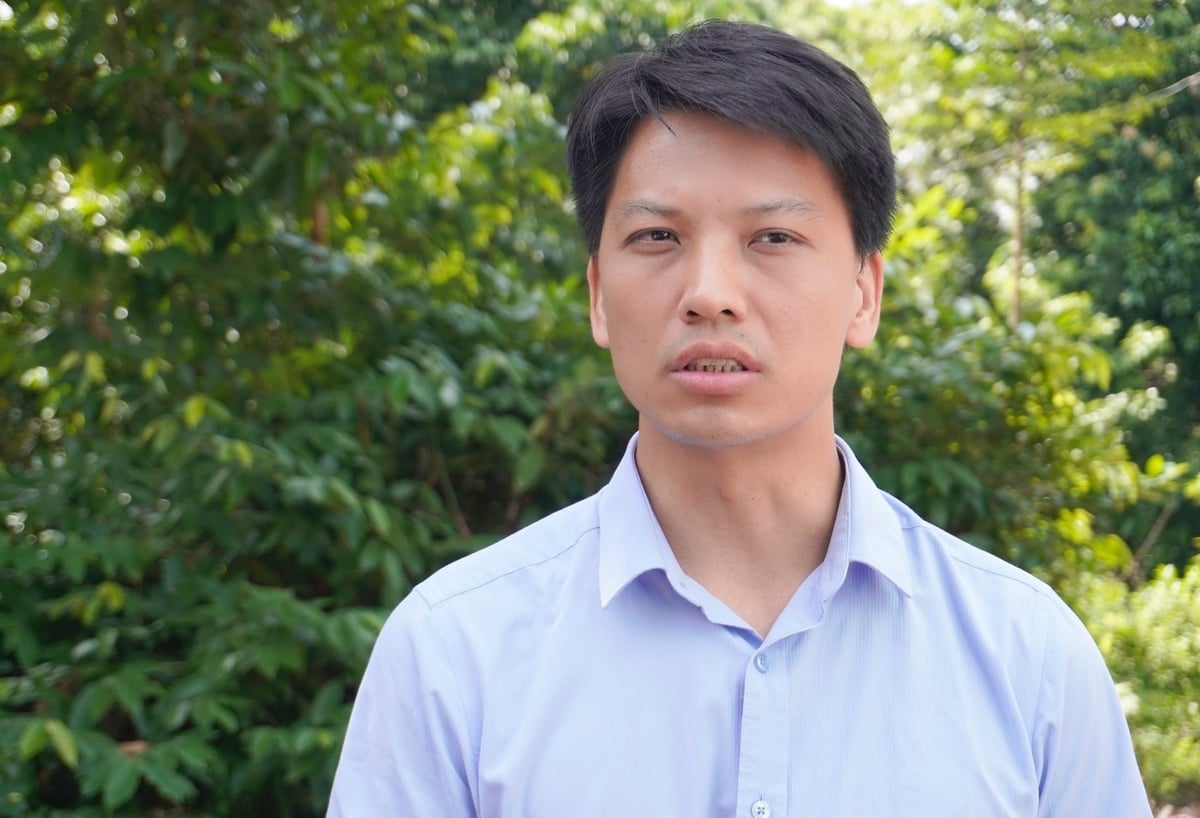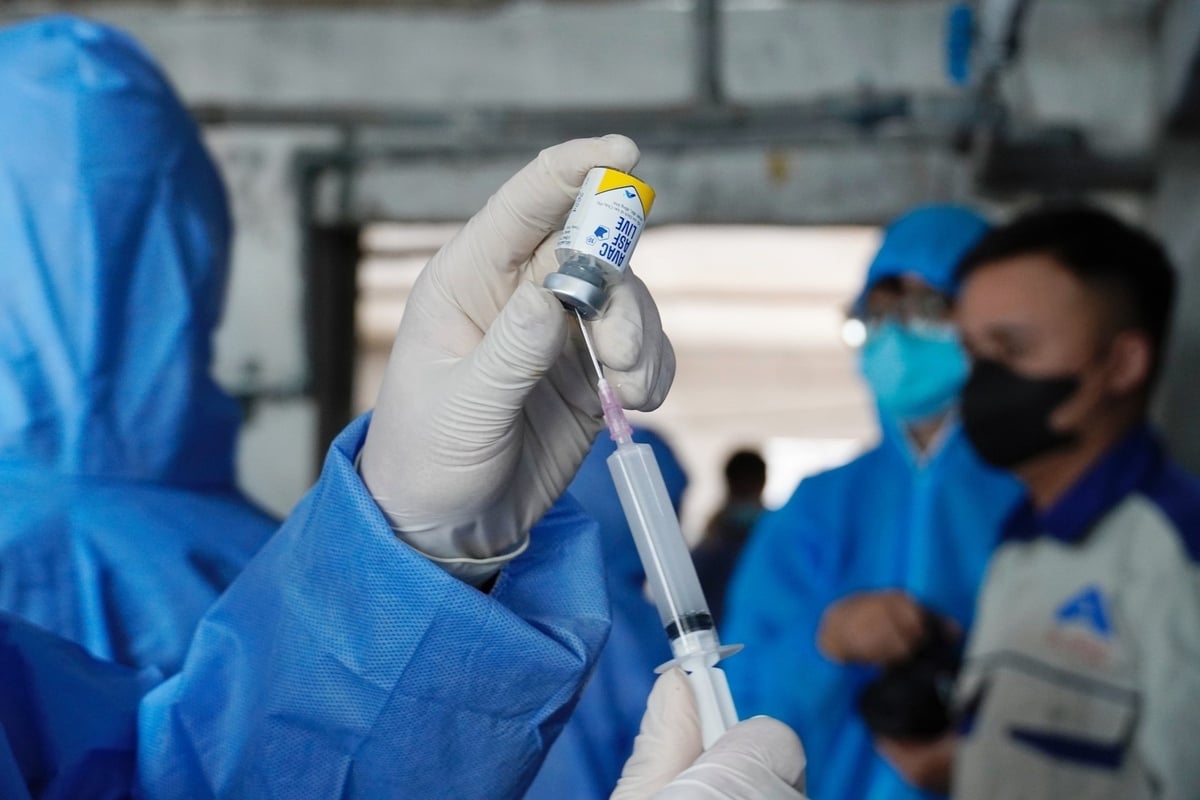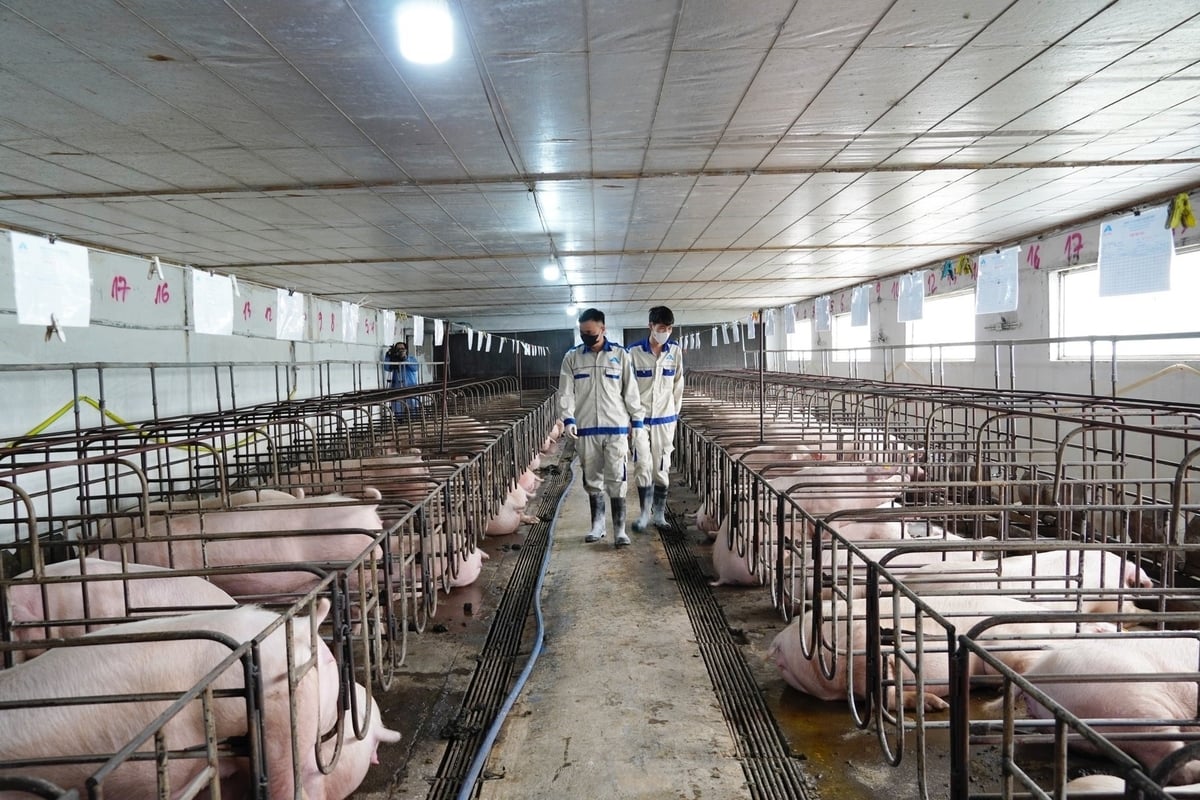December 30, 2025 | 16:53 GMT +7
December 30, 2025 | 16:53 GMT +7
Hotline: 0913.378.918
December 30, 2025 | 16:53 GMT +7
Hotline: 0913.378.918
According to Dr. Nguyen Van Diep, General Director of AVAC Vietnam JSC, in the early stages, many livestock farmers were hesitant about using the African swine fever (ASF) vaccine for their herds. This reaction is entirely understandable.
First of all, this is the world's first ASF vaccine designed to protect against a dangerous disease, and it was developed by a domestic company. Due to its novelty, there was initially a lack of information, evidence, and practical models to demonstrate its effectiveness.

Dr. Nguyen Van Diep, General Director of AVAC Vietnam JSC, said the company had to implement many solutions to prove the safety and effectiveness of its ASF vaccine. Photo: Hong Tham.
Second, the vaccine has so far been used only for pigs, not for sows or boars. Meanwhile, many small- and medium-scale farming households raise sows and boars together with porkers in the same facility and in the same barn. Due to the lack of clear information on whether the vaccine could be shed and affect breeding pigs, farmers have remained hesitant, leading to limited use.
Third, many farmers were not yet fully confident and preferred to wait for successful models from large enterprises. Meanwhile, large-scale farming systems typically maintain effective biosecurity practices, which means they assess vaccines with great caution.
Fourth, in the initial stage, many farmers did not correctly understand the role of the ASF vaccine. They expected that vaccination would completely prevent their pigs from contracting the disease, whereas in reality, the vaccine only works as a preventive measure, not a cure. In numerous cases, farmers only turned to vaccination after their herds had already been infected or were in the incubation period, at which point the vaccine was no longer effective. As a result, they mistakenly concluded that the vaccine had no preventive value.
Fifth, during the early phase, few successful models were at the local level, which limited the spread of positive results. Even AVAC had to persuade provincial authorities to allow multiple pilot projects, ranging in scale from 200–300 pigs to 2,000–3,000 heads, before gaining their support and promoting the vaccine widely.
Additionally, in practice, communication work by veterinary staff and specialized officers has been limited and under-resourced, leaving farmers without comprehensive information. To this day, many small-scale farming households still believe that the ASF vaccine has not been circulated and is only in the trial phase. Thus, positive information about the vaccine's effectiveness has not been disseminated promptly or widely, fostering hesitation in applying this preventive solution.
To gain farmers' trust in using the ASF vaccine, AVAC's leader said the company had to implement many solutions to prove the vaccine's safety and effectiveness.
Firstly, AVAC developed collaborative models with various provinces, livestock enterprises, and feed dealer networks to directly introduce the vaccine to farmers. These successful models clearly underscored the importance of vaccination in disease prevention. Next, the company coordinated with media agencies to widely disseminate positive information to the community.

AVAC will continue to actively carry out research projects aimed at developing new vaccines capable of providing effective protection against recently emerged recombinant strains, as well as variants that may arise in the future. Photo: Hong Tham.
Moreover, AVAC has published research results on this vaccine in reputable international scientific journals to provide compelling scientific evidence. The company expects that, with scientific proof and active communication efforts, the vaccine will soon gain widespread acceptance among the farming community. In fact, the usage rate of the ASF vaccine has been steadily increasing.
However, Mr. Diep also acknowledged a current challenge: the emergence of hybrid genotype I and genotype II strains, against which AVAC's ASF vaccine does not yet provide protection, as it is currently effective only for the ASF virus strain belonging to genotype II.
"The hybrid genotype I and genotype II strains account for a very small proportion, whereas the dominant circulating strain at present is genotype II, the type against which AVAC’s ASF vaccine offers effective protection. Therefore, it is essential to intensify communication so that farmers clearly understand that the vaccine remains highly effective for the most prevalent strain while also bringing great economic value. In reality, every amount invested in vaccination can generate benefits many times greater than the cost," Mr. Diep emphasized.
Given the current complex developments of ASF, Mr. Diep stressed the need for synchronous coordination among management agencies, businesses, farmers, and scientists, along with long-term strategies associated with immediate solutions. Farmers should combine biosecurity measures with vaccination to protect their herds and prevent losses caused by the disease.

Farmers should combine the application of biosecurity measures with vaccination to minimize losses if the disease occurs at their farming facilities. Photo: Hong Tham.
For businesses, AVAC is committed to supplying high-quality vaccines while stepping up promotional activities, workshops, and awareness campaigns on vaccine solutions. In the long term, the company will actively implement research projects to develop new vaccines capable of providing effective protection against recently emerged recombinant strains and variants that may arise in the future.
In particular, for state management agencies, especially the Department of Livestock Production and Animal Health, Mr. Diep emphasized the need to further strengthen communication and enhance the monitoring of livestock destruction, disease reporting, quarantine, and slaughtering to prevent the risk of disease spread.
"In my opinion, to ensure synchronous implementation, collaboration is the key factor. In the immediate term, it is crucial to accelerate communication and actively implement vaccination to increase coverage. If the vaccination rate is not sufficiently high, disease pressure will not ease and the risk of rapid transmission will remain significant. This is a top-priority task that must be addressed immediately," Mr. Diep emphasized.
"One of the most important factors in increasing vaccination coverage in pig herds is the availability of vaccines for sows and boars. Currently, AVAC is actively working with the Department of Livestock Production and Animal Health to assess, test, and assay the AVAC ASF Live vaccine for these two categories," said Mr. Nguyen Van Diep, General Director of AVAC Vietnam JSC.
Translated by Thu Huyen

(VAN) From extensive shrimp ponds, baskets of don gathered on the mudflats, to boats carrying visitors to watch birds, all livelihoods here depend on clean water, green forests, and the calls of migratory birds.
/2025/12/26/0703-3-204813_117.jpg)
(VAN) Transparency in information and listening to local people have helped address ground clearance bottlenecks and build social consensus, thereby accelerating the progress of the JICA3 irrigation project.
/2025/12/27/0609-3-233846_327.jpg)
(VAN) The JICA3 project is expected to become a 'water shield,' helping control saltwater intrusion, proactively secure water resources, protect livelihoods, and promote sustainable development in coastal areas.
/2025/12/26/5654-3-164509_655.jpg)
(VAN) As Viet Nam makes strong commitments toward achieving net-zero emissions, controlling and reducing methane emissions in livestock production is increasingly becoming a mandatory requirement.

(VAN) 'People, Primates, Plants: Co-managing Biodiversity and Improving Livelihoods in Vietnam' (the PPP Project) is an international initiative implemented in Vietnam by BGCI, CEGORN, and ICRAF/World Agroforestry.

(VAN) Dak Nong established a risk-level zoning map for coffee, built a digital data platform for the sector, and promoted certified production in line with EUDR.
/2025/12/25/2709-1-211551_295.jpg)
(VAN) In response to the U.S. Marine Mammal Protection Act (MMPA), Gia Lai province is implementing many solutions to protect marine mammals and develop sustainable, responsible fisheries.